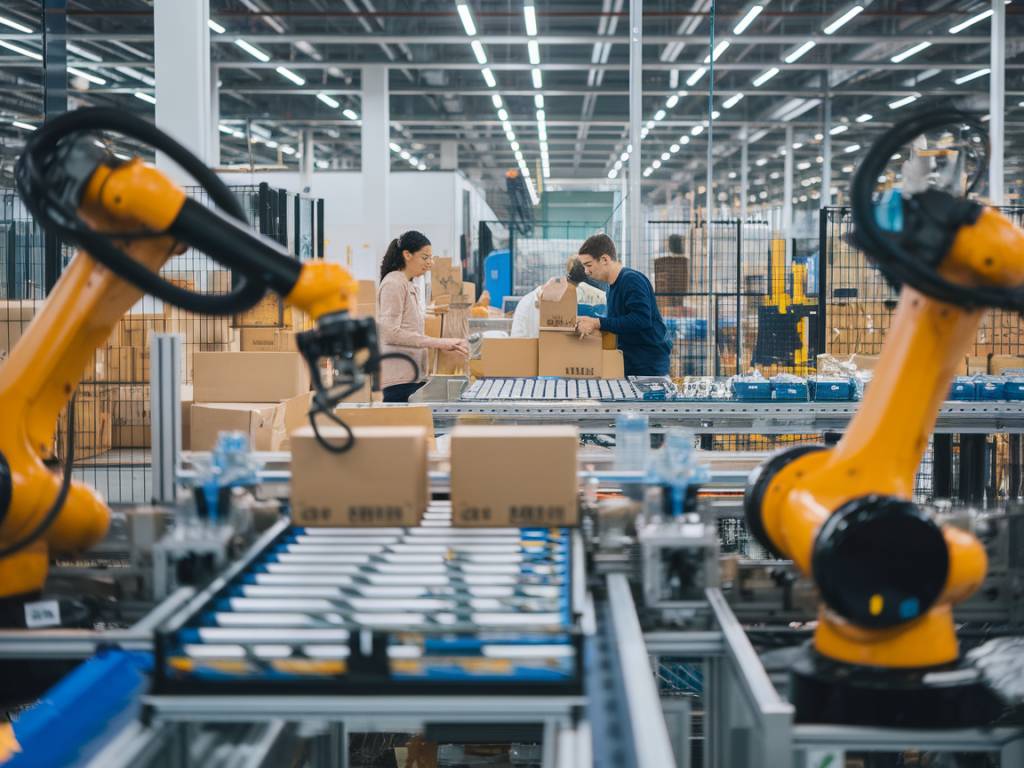The advancement of technology has transformed many industries, and the logistics sector is no exception. One of the most notable changes in recent years has been the shift from manual to automated processes in fulfillment centers. Robotics has played a pivotal role in this transformation, streamlining operations, enhancing efficiency, and reducing costs.
The integration of robotics in fulfillment centers marks a significant departure from traditional manual operations. Historically, workers in these centers would perform tasks such as picking, packing, and sorting manually, which were labor-intensive and time-consuming. However, the adoption of robotics has revolutionized these processes.
Modern fulfillment centers now employ a variety of robotic technologies to handle repetitive tasks. These automated systems are designed to work alongside human employees, enhancing productivity and accuracy while reducing the physical strain on workers.
Types of Robotics Used
Several types of robots are commonly used in fulfillment centers, each designed for specific tasks:
- Automated Guided Vehicles (AGVs): These robots are used to transport goods within the warehouse. They follow a predetermined path and can carry heavy loads, reducing the need for manual transport.
- Picking Robots: These robots are equipped with advanced sensors and AI algorithms to identify and pick items from shelves. They can work around the clock and significantly speed up the picking process.
- Sorting Robots: These robots are used to sort packages based on various criteria, such as destination or size. They ensure that packages are directed to the correct locations, minimizing errors.
- Packing Robots: These robots automate the packing process, from assembling boxes to placing items and sealing packages. They ensure that items are securely packed and reduce packaging time.
Advantages of Automation
The benefits of implementing robotics in fulfillment centers are manifold:
- Increased Efficiency: Robots can operate continuously without fatigue, leading to faster processing times and increased throughput.
- Enhanced Accuracy: Automation reduces the likelihood of human error in picking and sorting, ensuring that orders are fulfilled correctly.
- Cost Savings: While the initial investment in robotic systems can be substantial, the long-term savings from increased efficiency and reduced labor costs can be significant.
- Improved Safety: Robotics can handle dangerous or strenuous tasks, reducing the risk of workplace injuries and creating a safer work environment.
- Scalability: Automated systems can be easily scaled up to meet increased demand, making them ideal for businesses experiencing growth.
Challenges and Considerations
Despite the many advantages, there are also challenges associated with the implementation of robotics in fulfillment centers:
- High Initial Costs: The upfront investment in robotic systems and the associated infrastructure can be substantial. Businesses must carefully assess the potential return on investment.
- Integration Complexity: Integrating robotic systems with existing warehouse management systems (WMS) can be complex and may require significant customization.
- Maintenance and Downtime: Robots require regular maintenance to ensure optimal performance. Downtime for repairs can disrupt operations and impact productivity.
- Workforce Adaptation: Employees may need training to work alongside robots effectively. There can also be resistance to change from those who fear job displacement.
Case Studies
Several notable companies have successfully integrated robotics into their fulfillment centers, showcasing the potential benefits of automation:
- Amazon: Amazon’s use of Kiva robots has transformed its fulfillment process. These robots transport shelves of products to human pickers, drastically reducing the time needed to locate and pick items.
- Ocado: This UK-based online grocery retailer employs a sophisticated system of robots to pick and pack groceries in highly automated fulfillment centers, allowing for rapid order processing.
- Zappos: The online shoe and clothing retailer has implemented robotic systems for sorting and packing, significantly speeding up its order fulfillment process.
Future Trends in Automation
The future of robotics in fulfillment centers looks promising, with several emerging trends poised to further revolutionize the industry:
- AI and Machine Learning: Integrating AI and machine learning with robotics will enhance decision-making capabilities, enabling robots to perform more complex tasks and adapt to changing conditions.
- Collaborative Robots (Cobots): Cobots are designed to work alongside human workers, complementing their efforts and enabling more efficient workflows.
- Advanced Sensors and Vision Systems: The development of advanced sensors and vision systems will improve robots’ ability to perceive and navigate their environment, enhancing their functionality.
- Mobile Robotics: Future robots may be able to move freely within warehouses, dynamically adjusting their tasks based on real-time data and operational needs.
The transition from manual to automated processes in fulfillment centers is a significant step forward for the logistics industry. Robotics has proven to be a game-changer, offering efficiency, accuracy, and scalability. While challenges exist, the benefits of automation far outweigh the drawbacks, making it a critical component of modern fulfillment operations.
Summary: The integration of robotics in fulfillment centers enhances efficiency, accuracy, and scalability. Various types of robots handle tasks like picking, sorting, and packing, reducing human error and labor costs. Despite challenges like high initial costs and integration complexity, the benefits of automation outweigh the drawbacks, heralding a new era in logistics.




